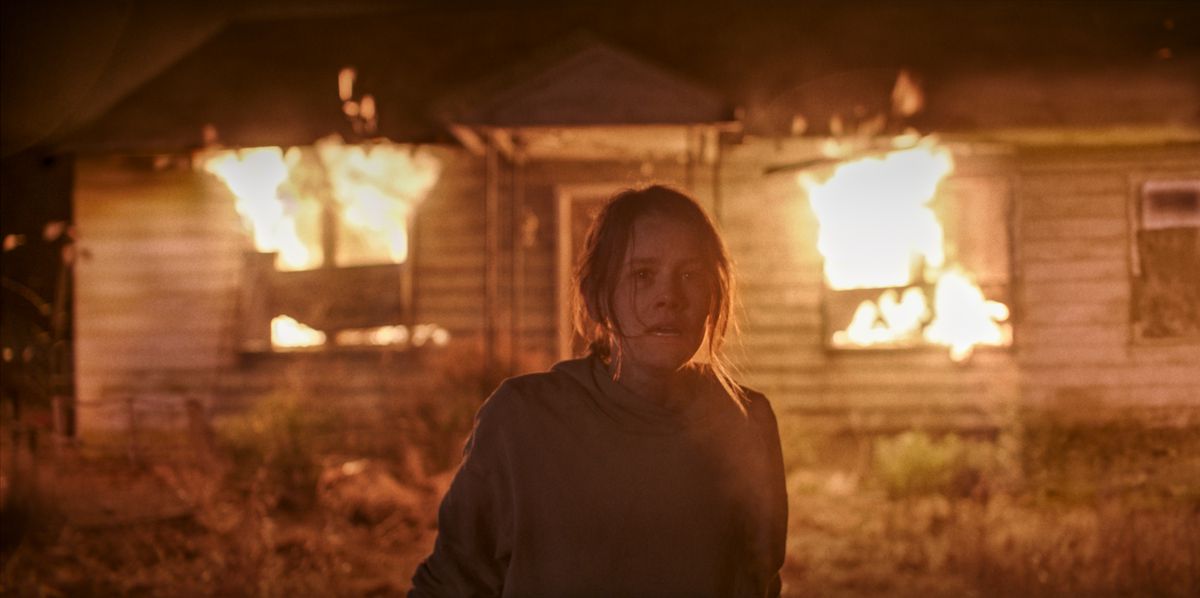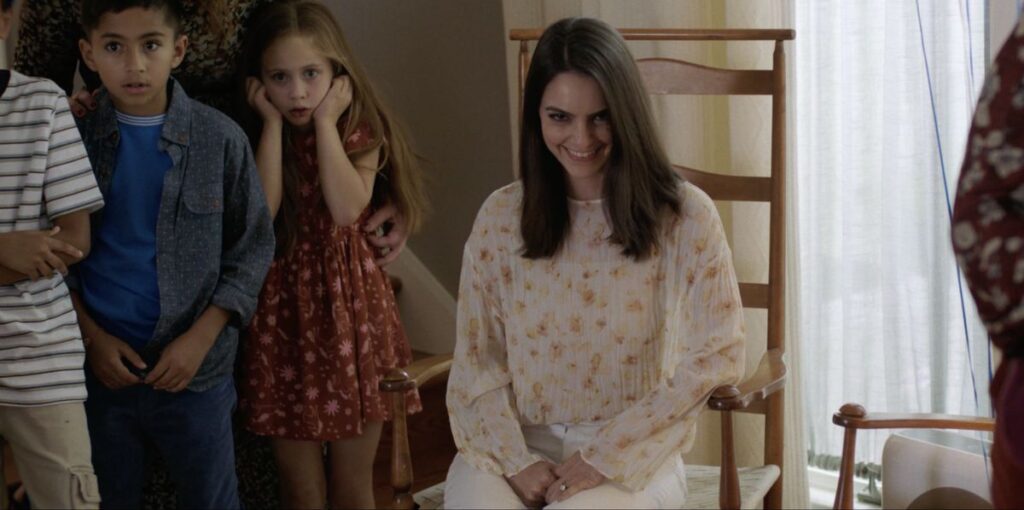Polygon is on the ground at the 2022 Fantastic Fest, reporting on new horror, sci-fi, and action movies making their way to theaters and streaming. This review was published in conjunction with the film’s Fantastic Fest premiere.
Parker Finn’s debut horror movie Smile is carefully calibrated to do different things to different viewers. To someone who isn’t well versed in horror, it’s an efficient and effective scare-fest, full of big, startling scares and freaky, grinding tension.
But it works entirely differently for a savvy horror crowd who can recognize the ways Finn iterates on other popular horror movies, and predict from the start where the story is bound to go. Smile often winks at the audience, offering up a silent You know what comes next, right? You can see how bad this could get, can’t you? It’s easy to see at any moment what Finn is doing with his characters, and where he’s aiming the story — and that seems to be entirely deliberate. Even so, it’s never easy to shrug off the impact when the promised horrors arrive.
Working from a previous short film, 2020’s Laura Hasn’t Slept, Finn’s script takes almost no time to establish who his protagonist is before her world starts falling apart. Working in a hospital’s emergency psychiatric ward, therapist Rose Cotter (Sosie Bacon) is used to seeing people in crisis, and talking them down. Then she encounters a badly shaken patient who claims she’s haunted by some sort of malevolent entity no one else can see, a creature with a horrifying smile who torments her by appearing in the guise of people she knows.
Image: Paramount Pictures
The story sounds like a paranoid delusion — and when Rose tries to talk to other people about the shape-changing, invisible, malevolent curse-creature, she sounds like she’s having paranoid delusions, too. “I’m not crazy,” she professes to her blandly kind fiancé Trevor (Jessie T. Usher), her brittle older sister Holly (Gillian Zinser), and her patrician former therapist Madeline (Robin Weigert, in a role that’s light-years away from her turn as Deadwood’s Calamity Jane). But Rose can’t find a way to sound convincing when she says it, especially to a world that’s cynical and unsympathetic toward the mentally ill.
Smile is often a gimmicky, even corny horror movie, packed with so many jump-scares that the sheer pile-on borders on laughable. Finn uses abrupt, loud sound cues and brutally rapid cuts to get viewers yelping and flinching over things as mundane as Rose biting into a hamburger, or tearing off a hangnail. But no matter how excessively the legitimate scares pile up, they’re startling and convincing. The editing and music are impressively tuned for maximum impact whenever the slow-burning tension resolves with an abrupt, ugly surprise. All of which makes Smile an efficient ride, if an unusually unrelenting one.
But Finn pulls off the equivalent of a magician showing audiences how the trick is done, then doing it so effectively that it still looks like magic anyway. His script patterns Smile after The Ring, with Rose experiencing an inciting incident, discovering she’s on a deadly deadline, drawing in her reluctant but soulful ex to help her, then doing research into the phenomenon, with worrying results. But where other films that followed The Ring’s beats just felt derivative (including several of its own clumsy sequels), Smile uses the familiarity of the story to set up anticipation. When Rose sees a possible solution to her problem, Smile invites viewers to consider the logical endpoint of her discovery, and wonder whether she’ll make the same selfish choice Naomi Watts’ character made in The Ring — and if so, who will suffer as a result.

Similarly, Smile’s setup broadly mimics the one in It Follows, with a threat passed virally from person to person, proceeding implacably toward its next victim, while wearing a variety of faces, turning everyone in the protagonist’s life into a potential threat. But again, instead of feeling like a copycat, Smile uses the familiarity to heighten the sense of danger, until viewers can’t trust anyone they see on screen to be human — which puts them neatly inside Rose’s increasingly disintegrating mindset.
The human element in Smile is as carefully calibrated as the jump scares, in ways designed to keep the audience worrying when they aren’t flinching. Finn populates the story with vulnerable potential victims: Longtime horror fans know to be worried when it turns out that Rose has a beloved cat, or that Holly has a sweet 7-year-old boy, or that Rose’s helpful ex Joel (Kyle Gallner) is sensitive, open-hearted, and still in love with her. (Kal Penn also pops up as Rose’s supervisor, in a role that seems particularly designed to provide a target for mayhem.) And the way Rose is repressing a childhood trauma, which she partially shares with Holly and is partially the reason for so much tension between them, sets up some particularly rich emotional ground. Smile is almost painfully efficient in setting up for calamity: It’s bare-bones storytelling, with every new character or element designed to strengthen the sense of dread over who’s likely to die, and how badly.
The movie’s central theme adds to the sense of dread as well. From the moment a policeman dismisses his responsibility to investigate a grotesque death by writing the victim off with a cavalier “She sounds fucking crazy to me!”, it’s evident that at heart, Smile is about the stigma around mental illness, and the urge to dismiss or demonize people navigating it.

Image: Paramount Pictures
Finn finds fertile ground in the vast and possibly unbridgeable gap between sufferers and even well-intentioned onlookers. The audience’s sympathy is likely to be with Rose, who’s living with a terror she doesn’t know how to fight. But it’s also easy to see why other people would find it discomfiting, trying to deal with a woman who’s behaving erratically and even dangerously, while blaming it all on some kind of incomprehensible fear-demon.
A deeper version of this movie might go even further into ambiguity about Rose’s situation, lingering on the question of whether she really is just having a psychotic episode, brought on by stress, overwork, and legitimate trauma. Finn chooses to avoid that path, making it fairly clear throughout that something supernatural is at work. It’s a reasonable choice to make in a movie this devoted to piling up fear atop fear, in getting the audience to anticipate the worst that could happen, while authentically caring about the people who might suffer when it does. Still, it robs Smile of potential subtlety.
But there’s nothing wrong with a horror movie that’s more designed to terrify an audience than to play games with them. As a writer-director, Finn seems to know that people might go to horror movies for different reasons, some more intellectual and some more emotional. Either way, he does an impressive job of making sure they’ll all come away satisfied, and at least a little shaken.
Smile opens in theaters on Sept. 30.

